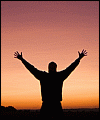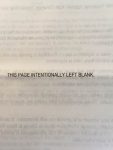Cooking as Transformational Gestalt
 COOKING FOR MYSELF ALL STARTED with Tamar Adler’s An Everlasting Meal: Cooking With Economy and Grace, during and after reading which I said to myself, “I can.”
COOKING FOR MYSELF ALL STARTED with Tamar Adler’s An Everlasting Meal: Cooking With Economy and Grace, during and after reading which I said to myself, “I can.”
It also started after seeing Michael Pollan’s Netflix documentary, “Cooked,” during and after viewing which I said to myself, “I must.”
Why I Love: Geology
 IT’S THE SMELL OF THE rocks. It’s knowing what everything on the surface is sitting on. It’s the finding of hand-samples. (It’s also the finding of fossils.) It’s the divisions of igneous, sedimentary and metamorphic. It’s the appreciation of Deep Time. It’s the walking-about in nature. It’s that every rocky layer is a page in a vast book. It’s the feel of obsidian and chert and soapstone. It’s knowing the Mohs scale. It’s using the Mohs scale. It’s that the raw ingredients are made out of stardust. It’s literally seeing the connection-to-everything-else.
IT’S THE SMELL OF THE rocks. It’s knowing what everything on the surface is sitting on. It’s the finding of hand-samples. (It’s also the finding of fossils.) It’s the divisions of igneous, sedimentary and metamorphic. It’s the appreciation of Deep Time. It’s the walking-about in nature. It’s that every rocky layer is a page in a vast book. It’s the feel of obsidian and chert and soapstone. It’s knowing the Mohs scale. It’s using the Mohs scale. It’s that the raw ingredients are made out of stardust. It’s literally seeing the connection-to-everything-else.
“Return to the Breath”
SOMETHING ANN AND I SAY to each other when life seems fretful and jagged is “Return to the Breath.”
It’s a compact admonition against spiraling out of control with what-ifs and oh-my-gods. Return to the Breath means sit (or stand, or walk) and pay attention to your breathing.
If you center your attention on breathing, you can’t help but connect to the moment you’re in — and know that The Moment is all you’ll ever have or exist in.
There are many schools and methods of breath control. One of my favorites, which I learned in the law-enforcement chaplaincy academy, is called “triangle breathing:” Inhale for a count of five. Hold for a count of five. Exhale for a count of five. Repeat until calm.
365 Names: Providence
PROVIDENCE literally means “that which/one Who provides.” It’s a comfortable and comforting image: G?d as Supplier of Necessities. For some reason, it pops up a lot in 18th- and 19th-Century literature and life, including as a proper name. Perhaps it’s an Industrial Age thing.
First Graf: The Jewish Catalog
As the subtitle implies, the book is chock-full of homemade ways to “do Jewish,” from making your own challah, tying and laying tefillin, navigating a siddur (prayerbook) or the Torah, burying someone with dignity, mystically understanding Shabbat, navigating the “Jewish Establishment” and much much more. Published in 1973 (and serially reprinted since then), it spoke to the nascent anti-authoritarian paradigm of “ethnic pride” and “finding your roots” that was then sweeping the United States. It features articles from such luminaries as Rabbi Zalman Schachter (founder of the Jewish Renewal movement) to Holocaust scholar Deborah Lipstadt, and sparked a communal yearning for authenticity and connectedness that still resonates today. The lavishly illustrated book spawned two sequels and is still relevant to anyone seeking to jump into the sea of Judaism:
All opinions are not equal. Some are a very great deal more robust, sophisticated and well-supported in logic and argument than others.”
~ Douglas Adams


